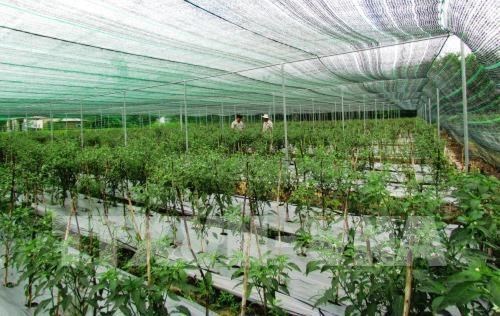According to Tran Tan Quy, Vice Director of the municipal Department of Agriculture and Rural Development, since the Government carried out Decree 35 on supporting businesses’ development, the number of companies choosing to operate in high-tech agriculture has shot up in the recent two years.
    |
 |
|
HCM City has become a magnet for high-tech agriculture thanks to its favorable business climate and large consumption market. |
More than 300 new agro-businesses were set up in the city in 2017, taking the total to some 1,300 enterprises, he said, noting that the city targets to have 1,500 high-tech agro-firms by 2020.
Along with the state’s support, the city also shaped policies to encourage high-tech farming in the city during 2017-2020. Accordingly, agro-businesses can get preferential loans if they can prove that their accounting books are transparent and all of the process, from material purchasing, wage payment and business contracts must be transacted through banks.
Meanwhile, the policies are also designed to support the development of high-tech agricultural cooperatives, Quy said.
Responding to agro-businesses’ complaints about obstacles in accessing banks’ loans, the city proposed that the State Bank of Vietnam pilot special lending models based on the specific regulations applied to HCM City. The municipal Department of Agriculture and Rural Development will continue to open training courses to help farmers, cooperatives and startups in agriculture build better production and business plans in order to become eligible for loans.
Recently, several profitable models of hi-tech agriculture have earned recognition in the city. One of them is Nong Phat, which has applied VietGAP standard in growing melon at its 2.3-hectare farm in Dong Thanh commune, Hoc Mon district.
High-tech farming is also becoming a trend for suburban districts. Cu Chi district alone now has 26 high-tech farming models with a total area of 303.5 ha, up 285ha from 2016. The farms focused on the production of safe vegetables, milk cow, orchid and ornamental trees, which are all suitable to the market’s taste and local natural conditions.
Source: VNA